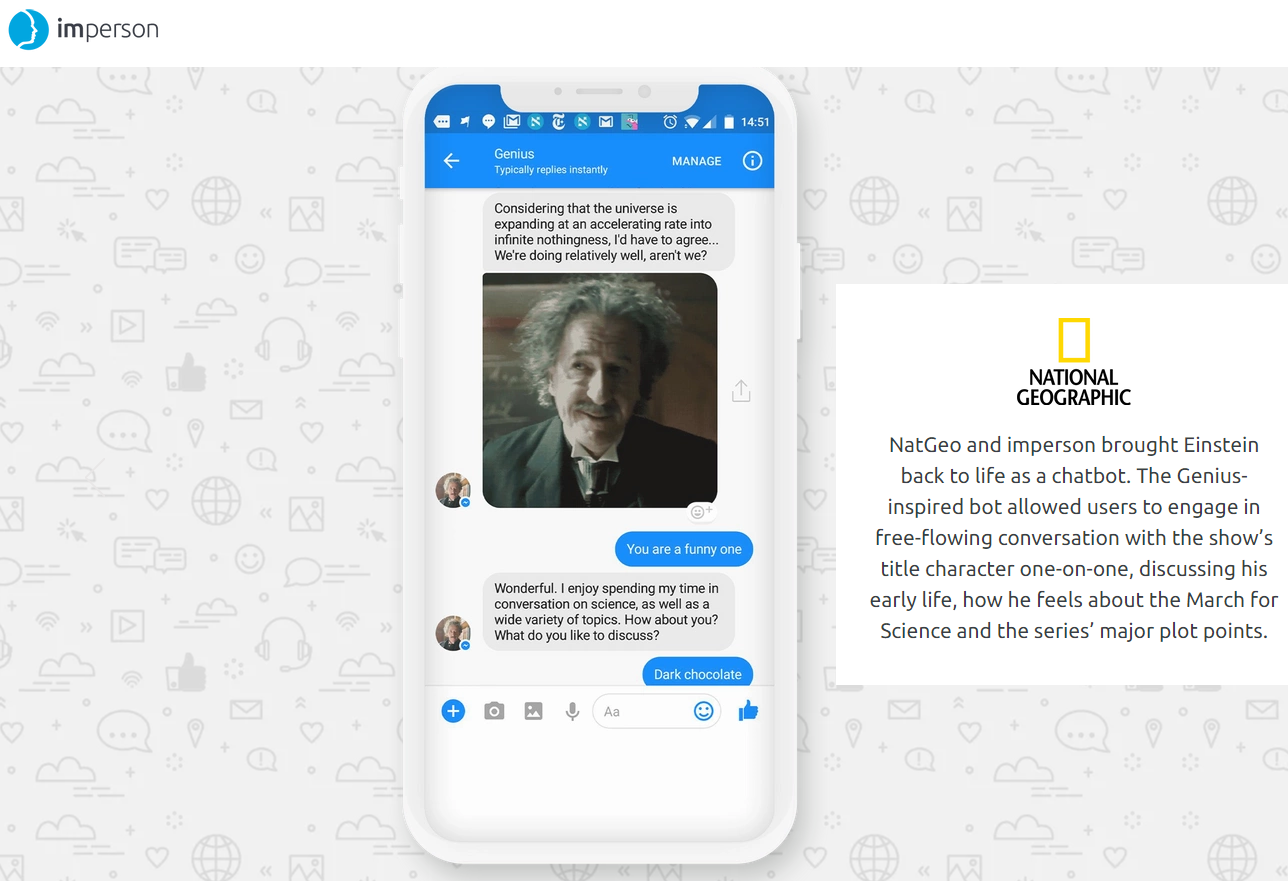When people are able to easily message a business, they’re more likely to trust that business, and this is true around the world. Having the ability to quickly and easily ask questions or request key information means less wait time and quicker transparency.
But chatbots offer more than just trust and less wait time for customers and businesses. When done right, website chatbots can help your business meet certain goals and offer specific options for your customers. Plus, they give you the chance to meet online customers in a communication space they already feel comfortable in, improving the customer experience without requiring them to endure long hold times on the phone or wait days for an email response. Chatbots also take massive pressure off sales and customer service teams, freeing them up for work that actually requires human attention.
Chatbots aren’t exactly a newfangled idea, so chances are, you’re already familiar with these various benefits chatbots offer. If you aren’t currently using a chatbot tool, it’s likely because there are a ton of options out there and you aren’t sure which one is right for your needs. If this is your struggle, we’re here to help you! Don’t take on the tedious task of sorting the good from the bad alone. Instead, check out our five recommendations.
It’s important to note that there is a massive array of chatbot builders for different use cases – from those primed for Twitter DMs to those like Chatfuel that create chatbots just for Facebook messenger. While these are great (and often free), we’re only including chatbot tools that cater to a wide variety of platforms.
Let’s dive in!
1. imperson

How it works: Imperson is a full-service chatbot, supporting text, audio, video, AR, and VR on all major messaging platforms. It enables you to create chatbots that cater to your business’s unique voice and brand so you can continue to build strong relationships with your customers.
How much it costs: It depends on your needs, and you have to contact sales for pricing information.
What we like: The user-friendly interface and laid back approach that make this a versatile tool for businesses truly looking to foster lasting relationships.
2. ChatBot
How it works: ChatBot is a simple but powerful tool for creating chatbots that integrate with a variety of platforms — from Messenger and Zapier to Slack, Skype, and Twitter.
How much it costs: Free for 14 days, then $50/month for 1,000 chats (and more chats for an additional fee).
What we like: From the get-go, ChatBot guides you to create your first chatbot, with straightforward commands to create your first story and interaction. They also have a ton of templates, so if you are completely terrified at the prospect of setting up a chatbot, this one will hold your hand from start to finish.
3. Dialogflow
How it works: DialogFlow is an omnichannel conversational AI that has a bot-building platform. You can create an “agent” (a conversation interface) for your chatbot, then an “intent,” or a series of terms that a user might ask surrounding one topic. Next, you create various responses for that query and test it out to ensure it works well.
How much it costs: Varies based on the edition and monthly requests.
What we like: We like the broad range of possibilities when it comes to setting up conversations and the step-by-step tutorial for setting up your first chatbot.
4. Pandorabots
How it works: With a multitude of chatbot templates and add-ons like custom chatbot development and other professional services, Pandorabots can build anything from simple chatbots to very complex ones.
How much it costs: There are four versions: free, premium ($19/month), pro ($199/month), and enterprise (contact sales for pricing).
What we like: It’s easy to navigate, sleek and professional, and integrates with messenger, SMS, Slack, Twitter — you name it. What’s not to love?
5. FlowXO
How it works: Begin with FlowXO by setting up your first “flow,” or conversation, and seeing it play out in real-time in a test box at the right. Flows contain triggers and actions (user input and chatbot responses). After you’ve built and deployed your chatbot, track interactions within the FlowXO dashboard.
How much it costs: There are two versions: free and standard ($19/month). They also offer bot and interaction add-ons.
What we like: The tutorial gives you a big-picture view of FlowXO’s capabilities from the start. While it doesn’t have as much hand-holding as some of the other interfaces, a huge benefit to FlowXO is its inexpensive standard edition. If you’re looking for a functional but cost-effective solution for your small business, this may be the one.
You don’t have to be a developer or expert coder to implement a chatbot tool that’s right for your business. The options above have great interfaces and are easy-to-use so you can install, set-up based on your needs, and then get back to your daily demands. Good luck finding the chatbot that’s the perfect solution for your business needs.
